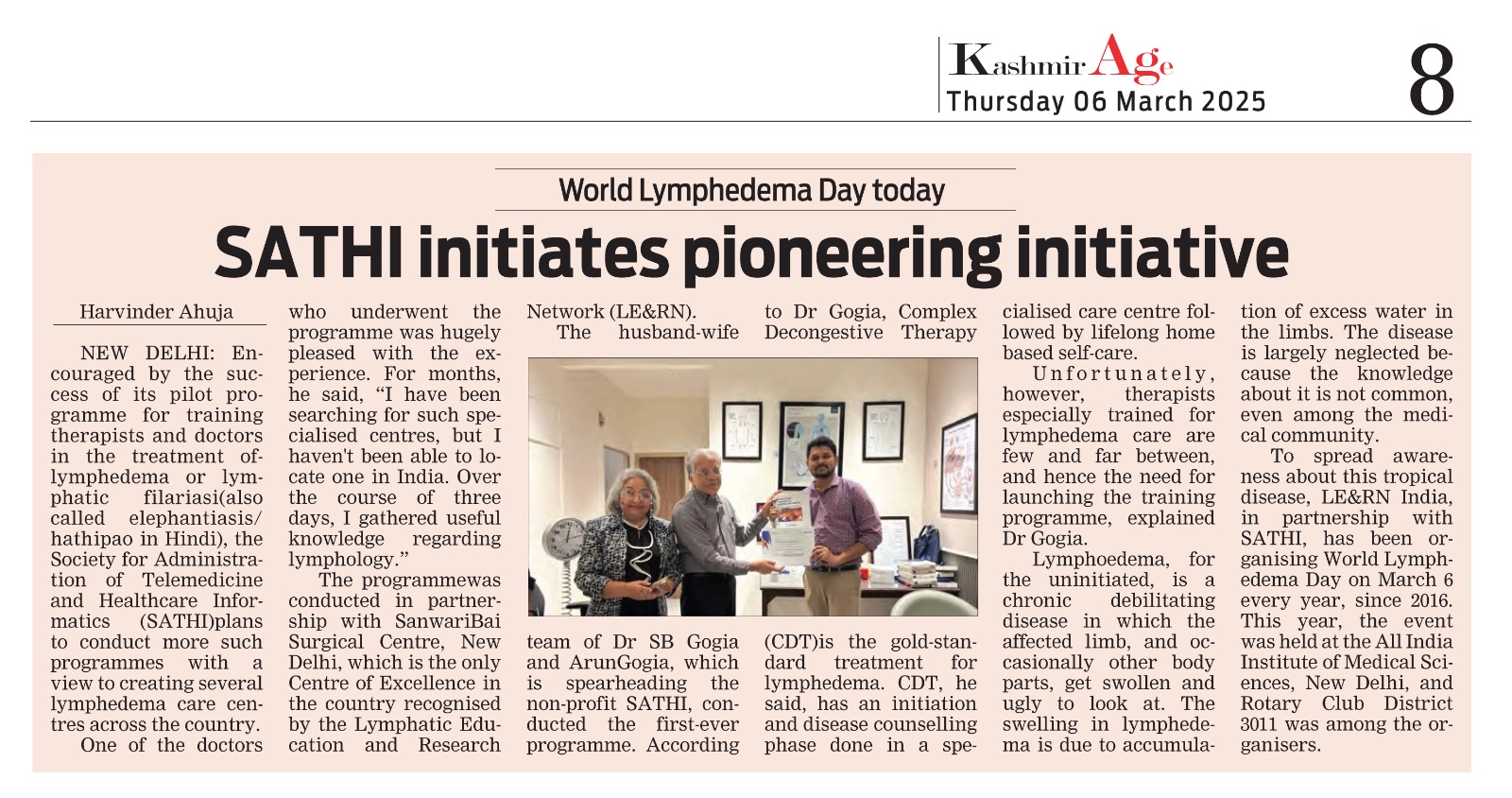Media Coverage


In some Asian countries, telemedicine is ‘not optional but compulsory’
Author: Korea Biomedical Review – Published 2022-10-28 00:29
India takes the lead in non-face-face treatment by running ‘state-run platform’
According to Shashi Gogia, president of the non-profit Society for Administration of Telemedicine and Health Care Informatics (SATHI), India’s healthcare vacuum in rural areas has even aggravated since 2005, 17 years from now.
The unfulfilled rate of doctors at primary medical institutions in India rose from 17.5 percent to 21.8 percent. The situation is even more serious in special care. The unfulfilled rate of medical specialists at provincial medical institutions jumped from 47.7 percent in 2005 to 68.0 percent 17 years later.
Part II- Lymphoedema and its management
Author: Kashmir Post – Published 2017-03-04 23:24
Digital health especially Telemedicine and Telehealth are an integral part of the Digital India campaign. A National Digital Health Blueprint (NDHB) was released in 2019 with emphasis on adoption of an Electronic Health record system for all clinical establishments.
Shortage of trained manpower is affecting growth of EHR as well as adoption of Telemedicine. There is a huge untapped demand for such grass root level health workers who in turn can build a career in health care.
Telemedicine Health Support eClinics in Nepal
Author: ICTpost – Published 2015-09-09 00:44
A 7.9 Richter quake shook the central districts of Nepal including Kathmandu on April 25th 2015. Its effects so far include over 8700 dead, 20,000 injured, and devastation of many buildings with over 1.4 million rendered homeless.
Future of e-health in India is bright : Dr. Shashi Gogia, President, Indian Association for Medical Informatics
Author: eHealth Network – Published 2006-11-10 01:04
Making a National Population Database is essential. A person, where ever he or she is staying, can be facilitated a good quality health care through this process of e-Health




